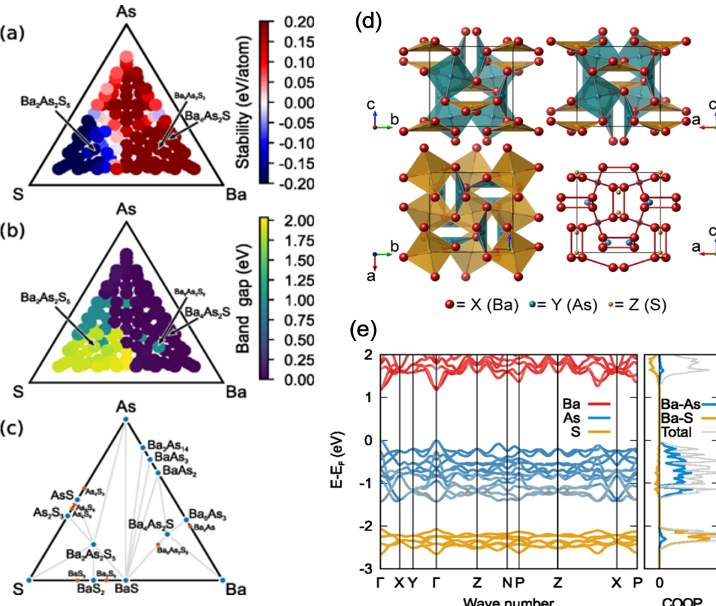 Recently, novel methods based on materials informatics and machine-learning (ML) models have emerged to assist the search for materials with improved properties in industrially relevant applications. To apply this approach in heteroanionic materials (HetMs) discovery, NU-MRSEC IRG-2 has reported a computational investigation of a series of ternary HetMs with tunable band gaps from machine-learning and crystal structure prediction. The compositions for these materials were predicted through a search guided by machine learning, while the structures were resolved using the minima hopping crystal structure prediction. Several candidates X4Sb2Se (X=Mg, Ca, Sr, Ba) have been predicted to exhibit strong optical absorption in the visible range, while others show promising thermoelectric performance due to high power factors and low lattice thermal conductivities.
Recently, novel methods based on materials informatics and machine-learning (ML) models have emerged to assist the search for materials with improved properties in industrially relevant applications. To apply this approach in heteroanionic materials (HetMs) discovery, NU-MRSEC IRG-2 has reported a computational investigation of a series of ternary HetMs with tunable band gaps from machine-learning and crystal structure prediction. The compositions for these materials were predicted through a search guided by machine learning, while the structures were resolved using the minima hopping crystal structure prediction. Several candidates X4Sb2Se (X=Mg, Ca, Sr, Ba) have been predicted to exhibit strong optical absorption in the visible range, while others show promising thermoelectric performance due to high power factors and low lattice thermal conductivities.
Physical Review Materials, 3, 035404 (2019).